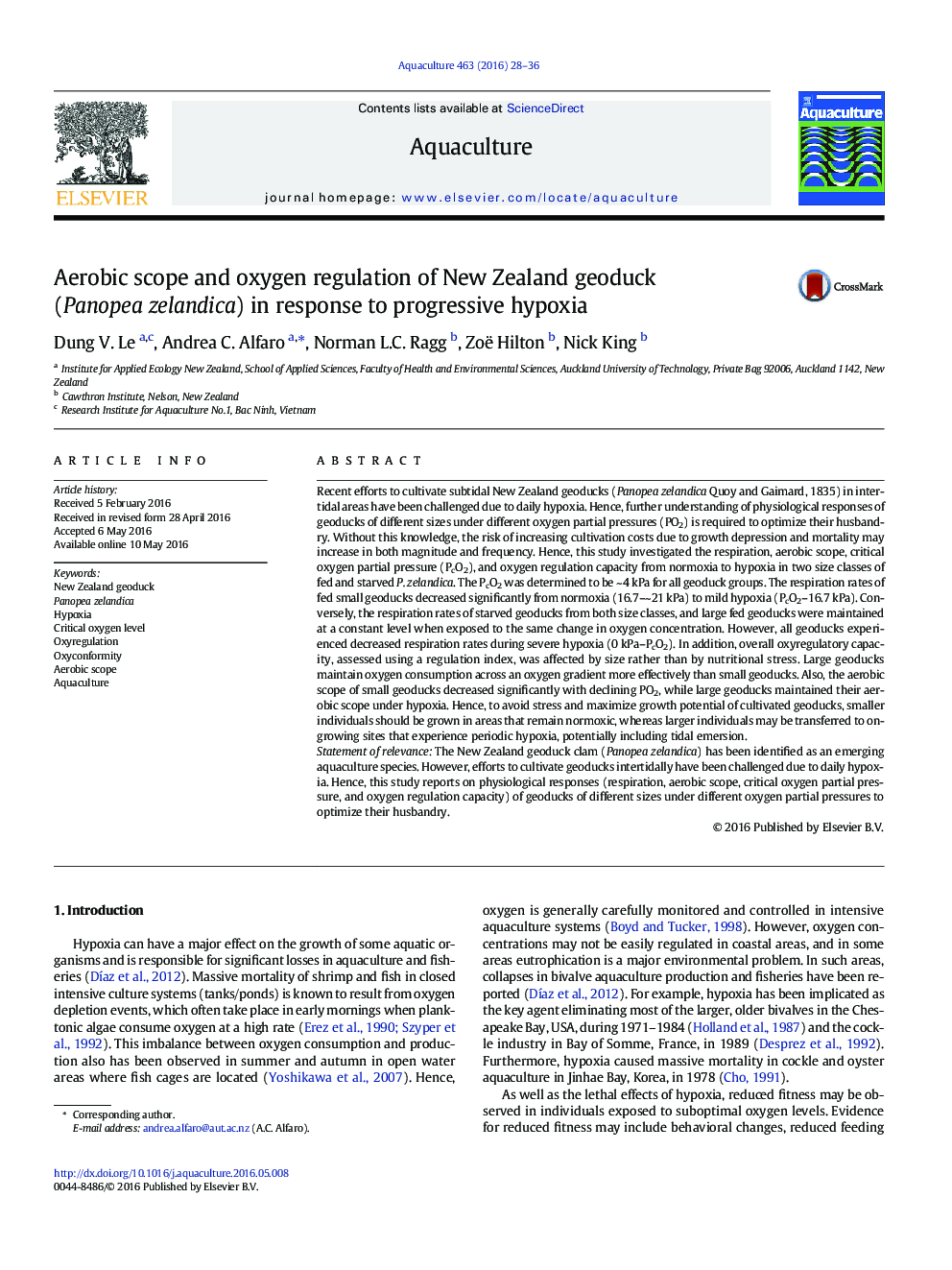| کد مقاله | کد نشریه | سال انتشار | مقاله انگلیسی | نسخه تمام متن |
|---|---|---|---|---|
| 2421350 | 1552824 | 2016 | 9 صفحه PDF | دانلود رایگان |

• Physiological responses of geoducks of different sizes differ under different oxygen partial pressures.
• Geoducks experience decreased respiration rates during severe hypoxia.
• Geoduck oxyregulatory capacity is affected by size rather than by nutritional stress.
• Aerobic scope of small geoducks decreases with declining PO2, while large geoducks maintain their aerobic scope under hypoxia.
Recent efforts to cultivate subtidal New Zealand geoducks (Panopea zelandica Quoy and Gaimard, 1835) in intertidal areas have been challenged due to daily hypoxia. Hence, further understanding of physiological responses of geoducks of different sizes under different oxygen partial pressures (PO2) is required to optimize their husbandry. Without this knowledge, the risk of increasing cultivation costs due to growth depression and mortality may increase in both magnitude and frequency. Hence, this study investigated the respiration, aerobic scope, critical oxygen partial pressure (PcO2), and oxygen regulation capacity from normoxia to hypoxia in two size classes of fed and starved P. zelandica. The PcO2 was determined to be ~ 4 kPa for all geoduck groups. The respiration rates of fed small geoducks decreased significantly from normoxia (16.7–~21 kPa) to mild hypoxia (PcO2–16.7 kPa). Conversely, the respiration rates of starved geoducks from both size classes, and large fed geoducks were maintained at a constant level when exposed to the same change in oxygen concentration. However, all geoducks experienced decreased respiration rates during severe hypoxia (0 kPa–PcO2). In addition, overall oxyregulatory capacity, assessed using a regulation index, was affected by size rather than by nutritional stress. Large geoducks maintain oxygen consumption across an oxygen gradient more effectively than small geoducks. Also, the aerobic scope of small geoducks decreased significantly with declining PO2, while large geoducks maintained their aerobic scope under hypoxia. Hence, to avoid stress and maximize growth potential of cultivated geoducks, smaller individuals should be grown in areas that remain normoxic, whereas larger individuals may be transferred to on-growing sites that experience periodic hypoxia, potentially including tidal emersion.Statement of relevanceThe New Zealand geoduck clam (Panopea zelandica) has been identified as an emerging aquaculture species. However, efforts to cultivate geoducks intertidally have been challenged due to daily hypoxia. Hence, this study reports on physiological responses (respiration, aerobic scope, critical oxygen partial pressure, and oxygen regulation capacity) of geoducks of different sizes under different oxygen partial pressures to optimize their husbandry.
Journal: Aquaculture - Volume 463, 1 October 2016, Pages 28–36